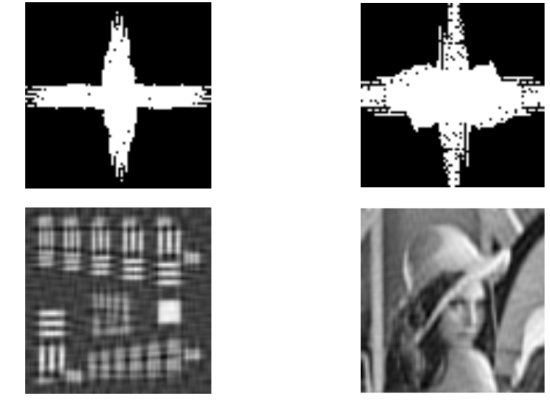Adaptive Fourier basis scanning for compressive single-pixel imaging: numerical simulations and evaluation
Filip Łabaj
supervisor: Ryszard Piramidowicz
Single-pixel imaging (SPI) is a relatively young field of study that concerns itself with methods of spatial and multimodal sampling employing only a single-point detector or a group of dispersed detectors.
A crucial part of many SPI systems is the use of compressed sensing (CS) methods. CS takes advantage of the fact that most objects and scenes can be nearly completely described using a relatively small, sub-Nyquist set of coefficients in certain sampling bases, reducing the number of samples needed to perform SPI. Commonly used bases include the Fourier, Hadamard and wavelet basis.
A single-pixel, 2-dimensional, N x N resolved image `f ∈R^(N^2×1)` is created by performing sequential measurements using a set of `I` modulation patterns `p_i ∈R^(N^2×1),{p_i }_(1≤i≤I)`, calculating the inner product between the measured scene/object and the patterns. Using the resulting measurement vector `m_i =f^T p_i,{m_i }_(1≤i≤I)`, we can reconstruct the image in several ways, dependent on used patterns and modulation strategy.
In this work we present a novel SPI sampling method that adapts a set of Fourier basis patterns to the measured scene, during the measurement. We show that this method, called the Fourier adaptive basis scan (F-ABS) significantly shortens the sampling time, while maintaining quality of reconstructed images, as compared to standard Fourier and Hadamard basis sampling methods.
To quantitatively evaluate the reconstruction quality, we use local (SSIM) and global (MSE, PSNR) metrics. Additionally, we simulate the influence of white noise and pattern binarization on the reconstructions.

Fig. 1 Two Fourier ABS reconstructions in the spectral (top, binarized) and spatial (bottom) domains, for 80x80 px test targets.